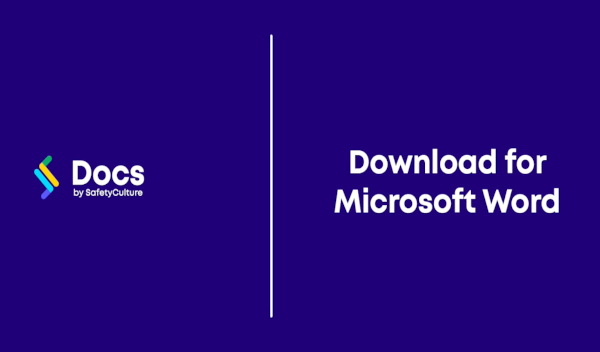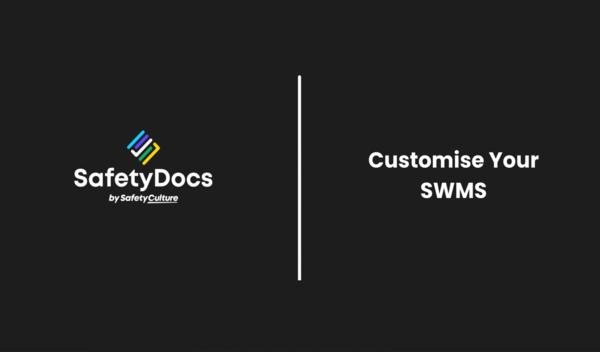Incident Register
- Instant Document Delivery via Email.
- Add to your existing management system.
- Can assist in ensuring workers are adequately trained.
- Customisation instructions provided.
- Microsoft Word Format (Fully editable).
- Only pay once (no subscriptions required).
Incident Register
Keeping track of OHS incidents and near misses in the workplace is critical to understand what's been happening, what's going wrong - and how to improve. The Incident Register helps businesses efficiently document and manage workplace incidents and near misses.
Content Overview
- Incident ID: Each incident is assigned a unique identifier for easy tracking and reference.
- Date/Time: Record the exact date and time when the incident occurred, providing a clear timeline.
- Location: Specify the exact location within the workplace where the incident took place.
- Type of Incident: Categorise the incident, such as near miss or high-risk, to assess severity.
- Description: Provide a detailed account of the incident, offering insights into what transpired.
- Person(s) Involved: List individuals involved in the incident, aiding in accountability and follow-up.
- Reported By: Identify who reported the incident, for transparency and traceability.
- Severity: Assess the impact level of the incident, guiding the urgency of response.
- Status: Indicate whether the incident is open, closed, or under investigation.
- Corrective Actions Taken: Detail the measures implemented to prevent recurrence and improve safety.
Key Benefits of the Incident Register
- Enhanced Safety Awareness: Regular use of the register promotes a culture of safety by highlighting areas needing improvement.
- Regulatory Compliance: Helps businesses meet legal obligations by maintaining accurate records of incidents and corrective actions.
- Improved Risk Management: Identifies patterns and trends in incidents, enabling proactive risk mitigation strategies.
Who is it Suitable For?
The Incident Register is ideal for safety officers, HR managers, operations managers, and business owners across various industries who are responsible for workplace safety and compliance.
Take control of workplace safety with the Incident Register. Equip your team with the tools needed to document, analyse, and prevent incidents effectively.
- Instant Document Delivery via Email.
- Add to your existing management system.
- Can assist in ensuring workers are adequately trained.
- Customisation instructions provided.
- Microsoft Word Format (Fully editable).
- Only pay once (no subscriptions required).
Incident Register
Keeping track of OHS incidents and near misses in the workplace is critical to understand what's been happening, what's going wrong - and how to improve. The Incident Register helps businesses efficiently document and manage workplace incidents and near misses.
Content Overview
- Incident ID: Each incident is assigned a unique identifier for easy tracking and reference.
- Date/Time: Record the exact date and time when the incident occurred, providing a clear timeline.
- Location: Specify the exact location within the workplace where the incident took place.
- Type of Incident: Categorise the incident, such as near miss or high-risk, to assess severity.
- Description: Provide a detailed account of the incident, offering insights into what transpired.
- Person(s) Involved: List individuals involved in the incident, aiding in accountability and follow-up.
- Reported By: Identify who reported the incident, for transparency and traceability.
- Severity: Assess the impact level of the incident, guiding the urgency of response.
- Status: Indicate whether the incident is open, closed, or under investigation.
- Corrective Actions Taken: Detail the measures implemented to prevent recurrence and improve safety.
Key Benefits of the Incident Register
- Enhanced Safety Awareness: Regular use of the register promotes a culture of safety by highlighting areas needing improvement.
- Regulatory Compliance: Helps businesses meet legal obligations by maintaining accurate records of incidents and corrective actions.
- Improved Risk Management: Identifies patterns and trends in incidents, enabling proactive risk mitigation strategies.
Who is it Suitable For?
The Incident Register is ideal for safety officers, HR managers, operations managers, and business owners across various industries who are responsible for workplace safety and compliance.
Take control of workplace safety with the Incident Register. Equip your team with the tools needed to document, analyse, and prevent incidents effectively.


